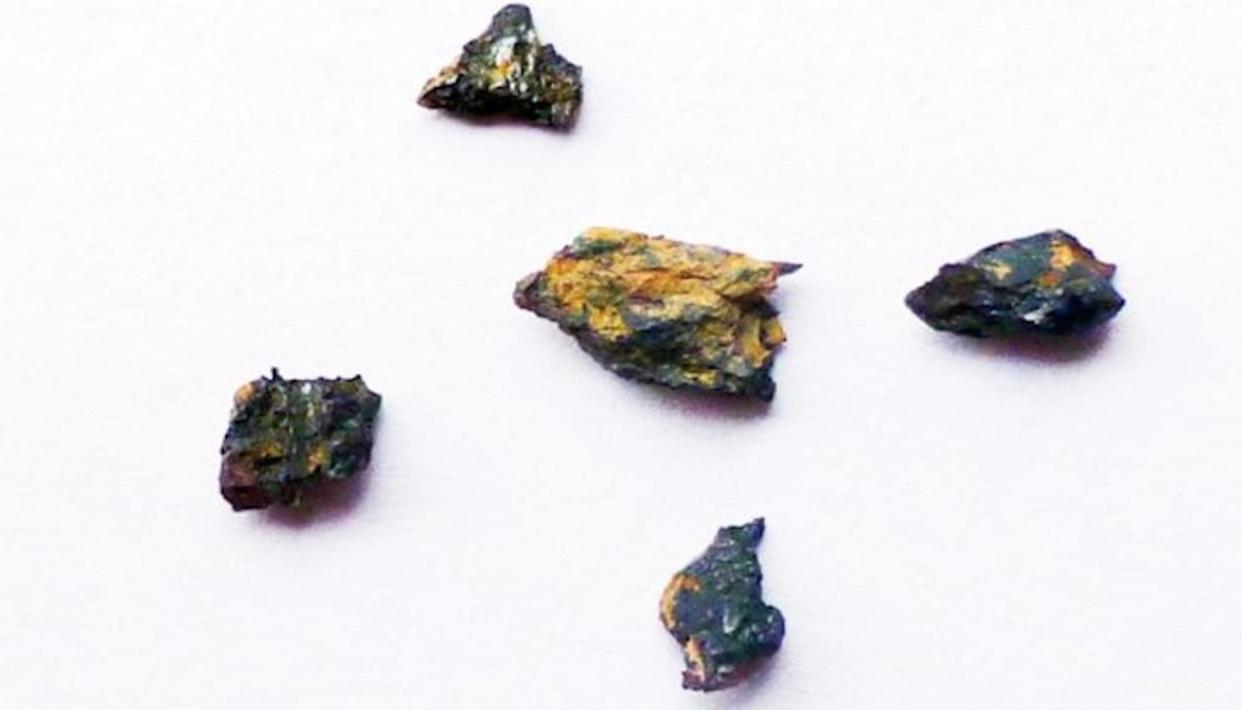Mysterious stone found in Sahara desert contains minerals unknown on Earth

A mysterious stone unearthed in 1992 in the Sahara desert contains minerals unknown on Earth – or in meteorites – and could be interstellar in origin.
The Hypatia stone is believed to come from the nucleus of a comet.
But new analysis by the team of researchers who initially analysed the Hypatia stone threw up unexpected results.
Most meteorites are made of silicon with a small amount of carbon, but the Hypatia stone has a huge amount of carbon compounds – some, known as polyaromatic hydrocarbons, are a major component in interstellar dust.
The stone also contains pure aluminium.
Most popular on Yahoo News UK
Driver faces £5,000 fine after ploughing through 20ft puddle to soak mum with pram
Woman who confessed to killing and burying man believed to be her father is charged with murder
‘Total panic’ as armed jewel thieves storm Ritz Hotel in Paris and steal goods worth millions of pounds
Jet Airways hostess is arrested for ‘smuggling $500,000 from India under her shoes and make-up’
M25 rapist Antoni Imiela given seven life sentences referred to parole board
Georgy Belyanin of the University of Johannesburg said, ‘The aluminum occurs in pure metallic form, on its own, not in a chemical compound with other elements.
‘As a comparison, gold occurs in nuggets, but aluminum never does. This occurrence is extremely rare on Earth and the rest of our solar system, as far as is known in science.’
‘There are also grains of a compound consisting of mainly nickel and phosphorus, with very little iron; a mineral composition never observed before on Earth or in meteorites.

This week snow fell on the Sahara for only the second time in 40 years (Bild: Hamouda Ben Jerad via Reuters)
Taken together, the ancient unheated PAH carbon as well as the phosphides, the metallic aluminum, and the moissanite suggest that Hypatia is an assembly of matter that existed in space before our Sun and the Earth formed.
Kramers said, ‘What we do know is that Hypatia was formed in a cold environment, probably at temperatures below that of liquid nitrogen on Earth (-196 Celsius).
‘In our solar system it would have been way further out than the asteroid belt between Mars and Jupiter, where most meteorites come from.
‘Comets come mainly from the Kuiper Belt, beyond the orbit of Neptune and about 40 times as far away from the sun as we are.
‘Some come from the Oort Cloud, even further out. We know very little about the chemical compositions of space objects out there. So our next question will dig further into where Hypatia came from.’

 Yahoo News
Yahoo News 

